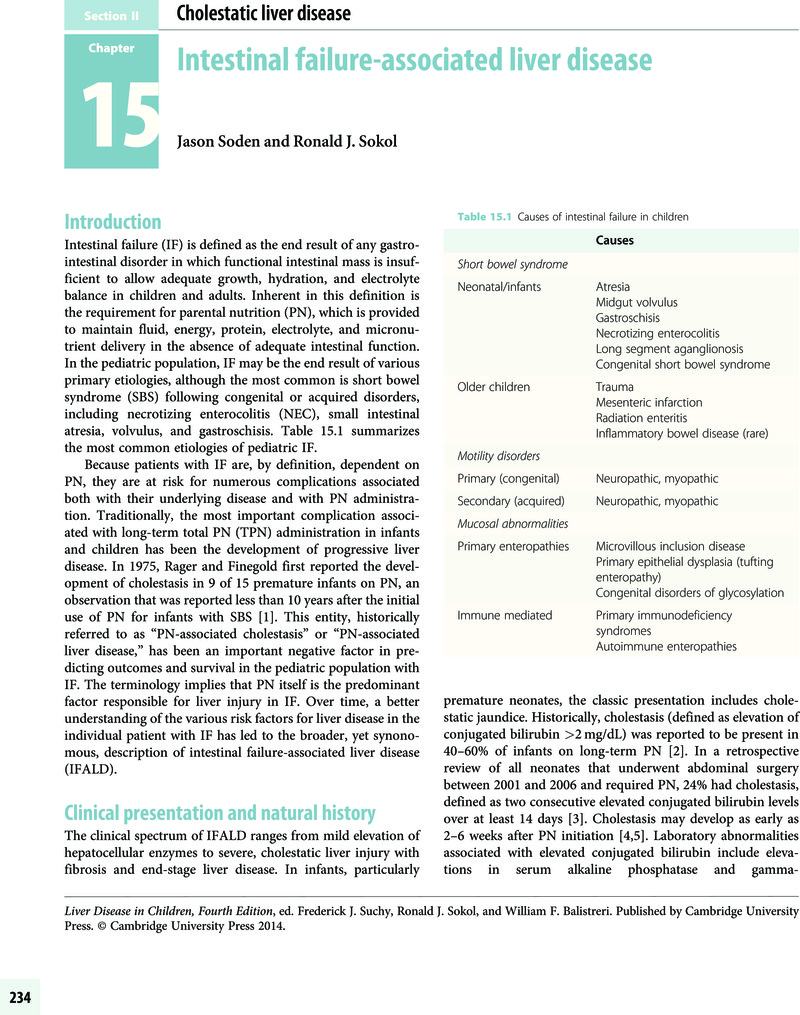Book contents
- Frontmatter
- Contents
- List of Contributors
- Preface
- Section I Pathophysiology of pediatric liver disease
- Section II Cholestatic liver disease
- Chapter 8 Approach to the infant with cholestasis
- Chapter 9 Medical and nutritional management of cholestasis in infants and children
- Chapter 10 Neonatal hepatitis and congenital infections
- Chapter 11 Biliary atresia and other disorders of the extrahepatic bile ducts
- Chapter 12 Neonatal jaundice and disorders of bilirubin metabolism
- Chapter 13 Familial hepatocellular cholestasis
- Chapter 14 Alagille syndrome
- Chapter 15 Intestinal failure-associated liver disease
- Chapter 16 Disease of the gallbladder in infancy, childhood, and adolescence
- Section III Hepatitis and immune disorders
- Section IV Metabolic liver disease
- Section V Other considerations and issues in pediatric hepatology
- Index
- References
Chapter 15 - Intestinal failure-associated liver disease
from Section II - Cholestatic liver disease
Published online by Cambridge University Press: 05 March 2014
- Frontmatter
- Contents
- List of Contributors
- Preface
- Section I Pathophysiology of pediatric liver disease
- Section II Cholestatic liver disease
- Chapter 8 Approach to the infant with cholestasis
- Chapter 9 Medical and nutritional management of cholestasis in infants and children
- Chapter 10 Neonatal hepatitis and congenital infections
- Chapter 11 Biliary atresia and other disorders of the extrahepatic bile ducts
- Chapter 12 Neonatal jaundice and disorders of bilirubin metabolism
- Chapter 13 Familial hepatocellular cholestasis
- Chapter 14 Alagille syndrome
- Chapter 15 Intestinal failure-associated liver disease
- Chapter 16 Disease of the gallbladder in infancy, childhood, and adolescence
- Section III Hepatitis and immune disorders
- Section IV Metabolic liver disease
- Section V Other considerations and issues in pediatric hepatology
- Index
- References
Summary

- Type
- Chapter
- Information
- Liver Disease in Children , pp. 234 - 246Publisher: Cambridge University PressPrint publication year: 2014
References
- 1
- Cited by



